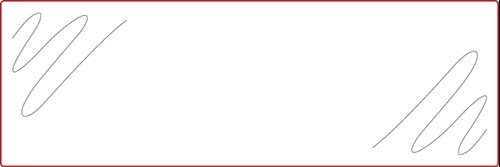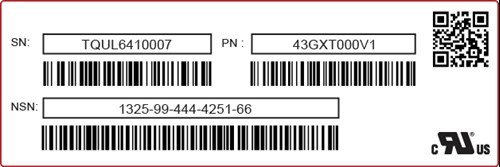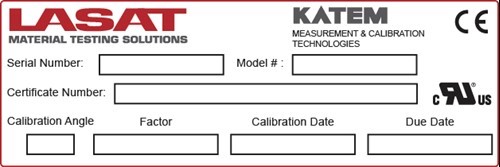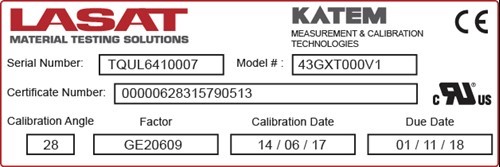UL969 Labeling - What you need to know

If you manufacture and supply a component part of a finished product for use in the North American or Canadian markets you may choose, or it may be the requirement of your customer that your product is approved by Underwriters Laboratory (UL).
Some customers also want to be prepared for potential UL requirements, or simply use it as a benchmark for build quality throughout the supply chain. Whatever the reason, this blog is intended to provide you with a better understanding of the component labeling requirements (UL969) for UL approved products.
Which labels must have UL969 approval?
In general, the more items of a product that are UL approved, the less final product testing is required for ultimate finished product approval. The labels are no exception and must be considered as a component part of the product if they serve a function on your product. For example, if the label carries important information, such as rating information, serial numbers, model numbers, instructions, warnings etc. the label will need to be UL approved under the UL969 component label program.
It is a popular misconception that all the labels on your product need to be UL approved, but if the label only carries your company logo and contact details etc. this may not need to be UL approved under UL969. This can be easily verified with your UL engineer.
As you are about to see, there are several different types of labels under UL969. We have thoroughly studied and understand the subject but also have access to UL label engineers to provide verification of requirements. The UL engineer or inspector dedicated to your product may not be thoroughly versed in the nuances of the label requirements and we can help provide clarification. At the end of the day, it is your responsibility to make sure your labels are compliant, but we do all we can to simplify the process and lead you in the right direction.
What is Primary and Secondary printing?
Primary printing of a label refers to any printing that a third party label manufacturer such as CILS International has printed on your behalf, whether the label is partially printed for you to add further data or if the label is supplied completely finished. In both cases, the label manufacturer must have had the label constructions, including all printing inks tested and approved.
Secondary printing is the UL term used for the print that is added to a label by the end user, usually by means of a Thermal Transfer or Laser printer. An end user can either print onto a blank or partially pre-printed label so long as the labels have been tested and approved by UL. It is vitally important that the end user uses only the approved ribbons (TT) and toner cartridges (laser) specified in the UL directory under the UL label material being used. These are referred to by UL as ‘Inks’ and if the end user does not use the appropriate ‘Ink’ specified in the UL directory, the final label will not be UL recognized.
The four types of label found under UL 969
1. Blank labels can be secondary printed by the end user so long as the label has PGJI2 (US) and PGJI8 (Canada) type approval correct recognized ‘Ink’ is used.

(Blank label example)
2. A label supplier such as CILS International can print variable data on behalf of the customer onto a blank label. However, because the end user receives the labels finished, they are considered to be primary printed by UL and therefore, the label supplier must have the exact construction tested by UL. These labels are tested and supplied under the category PGDQ2 (US) PGDQ8 (Canada).

(Blank printed label example)
3. A label manufacturer can supply a partially printed label which must be specifically tested and approved by UL. The end user can then add further data using the correct recognised ‘Ink’ (as 1. above).

(Part printed label example)
4. The label manufacturer can supply a completely finished label whether it contains a finished design and/or additional variable data (as 2 above).

(Fully printed finished label example)
Printing the UL Recognized Component Mark
If you are printing a UL Recognized Component Mark, you are free to do so but it is your responsibility to make sure that the correct logo is used. This should be verified with your UL engineer. If the printing of the UL mark is outsourced to a label manufacturer they must be part of the UL PGAA printing program to understand their record keeping responsibility to maintain UL compliance.
The 3 types of label UL Recognized Component Marks
There are three variations of UL’s Recognized Component Mark: one for the United States only, one for Canada only and one for both the United States and Canada.
 Recognized Component Mark for the United States
Recognized Component Mark for the United States
 Recognized Component Mark for the Canada
Recognized Component Mark for the Canada
 Recognized Component Mark for the United States and Canada
Recognized Component Mark for the United States and Canada
The C-UR Mark is applied to components only used in the Canadian market. Components with this type of Mark have been evaluated to Canadian standards. The optional C-UL-US Component Recognition Mark indicates compliance with both Canadian and U.S. requirements. UL encourages manufacturers distributing UL Recognized Components evaluated for both countries to use this combined Mark, but they may continue using separate UL Recognized Component Marks for the United States and Canada.
The bottom line.
Our mission is to be able to guide customers quickly and easily through the label supply process by acquiring a complete understanding of UL 969 component labeling and to communicate our knowledge in simple language.
The bottom line is that we can guide you through the communications that you need to have with your UL engineers relevant to the labeling of your product. We can use the line of communication that we have with our UL labeling engineers to help verify requirements if needed, and as an UL approved manufacturer with a huge portfolio of durable label products that are blank or partially printed ready for computer printing, or fully printed, can provide the labels that you need.
Please contact CILS International directly if you need specific UL label guidance.